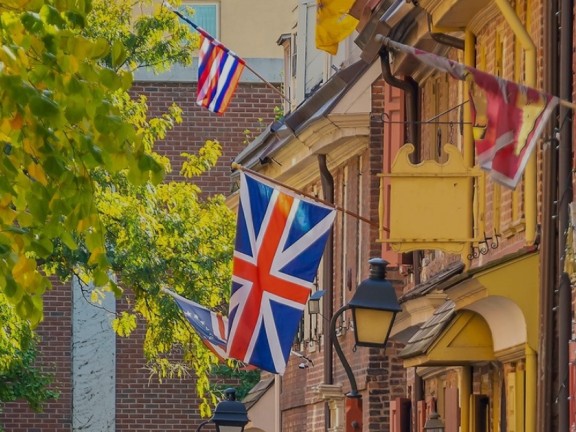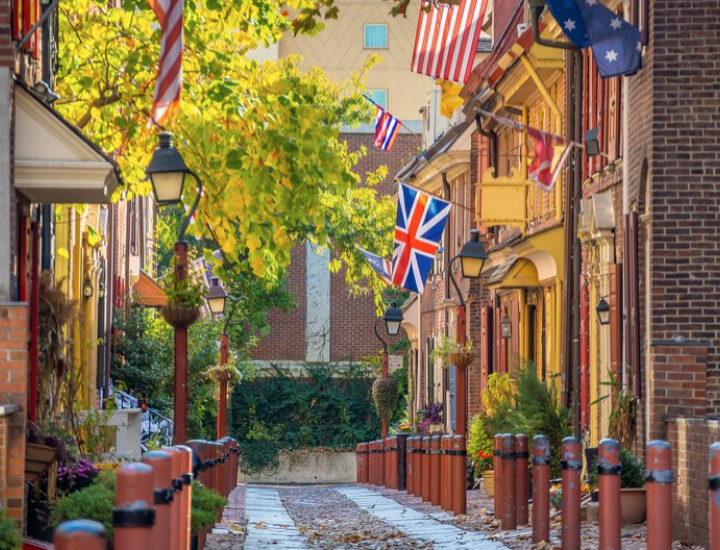Elfreth’s Alley Day

Once home to horses and buggies and Philadelphia’s working class, Elfreth’s Alley today showcases a piece of history frozen in time. A designated National Historic Landmark, this narrow, cobblestoned street adorned with Gregorian-style row homes offers no shortage of historical mysticism and charm. My fascination with historical neighborhoods found ample satisfaction during my visit on June 1 for Elfreth’s Alley Day, hosted annually by the Elfreth’s Alley museum, which can be visited at houses #124 and #126. The rest of the houses on the street are rented or owned by Philadelphia residents, who were gracious enough to open their doors for the event to allow the public a glimpse into the life of an Elfreth’s Alley resident.
The name Elfreth’s Alley comes from Jeremiah Elfreth, a blacksmith who built, owned, and rented out many of the homes seen standing today. His grandson, Josiah Elfreth, built house #137 in 1789 for his wife, Rachel Elfreth and their two sons, and lived there together until Elfreth’s death in 1793 from Yellow Fever.
Beyond the maintenance of the exterior historical integrity of these homes, residents have the liberty to renovate and remodel their interiors to suit modern, contemporary tastes. Peeking in and out of homes ranging from modernist interior decor to gracefully preserved traditional styles, I saw features of the remnants of gas lamp posts, classical French wallpaper and antique table settings, allowing visitors to be momentarily immersed into the 19th century.
While residents of Elfreth’s Alley today demonstrate affluence, in its heyday, Elfreth’s Alley was once a busy center for artisans, tradespeople, and federal officers. Throughout the 18th and 19th centuries, various craftsmen and women contributed to Elfreth’s Alley’s colorful community, offering services in tailoring, carving, blacksmithing, and baking. Adding to the diversity of the Alley, about 25 police officers lived in these homes between 1880 and 1920.
As Philadelphia continues to showcase its roster of Natural Historic Landmarks, Elfreth’s Alley offers a unique and picturesque testament to the city’s evolution, from the nation's first capital to the birthplace of the Declaration of Independence. Built in the 1700s, Elfreth’s Alley’s signature row-homes set the groundwork that the rest of the city would come to follow in its urban planning. Guided by a mission to preserve history, this small but architecturally mighty street was highlighted by GPA’s mission to share time capsules of Philadelphia’s history with the public.
